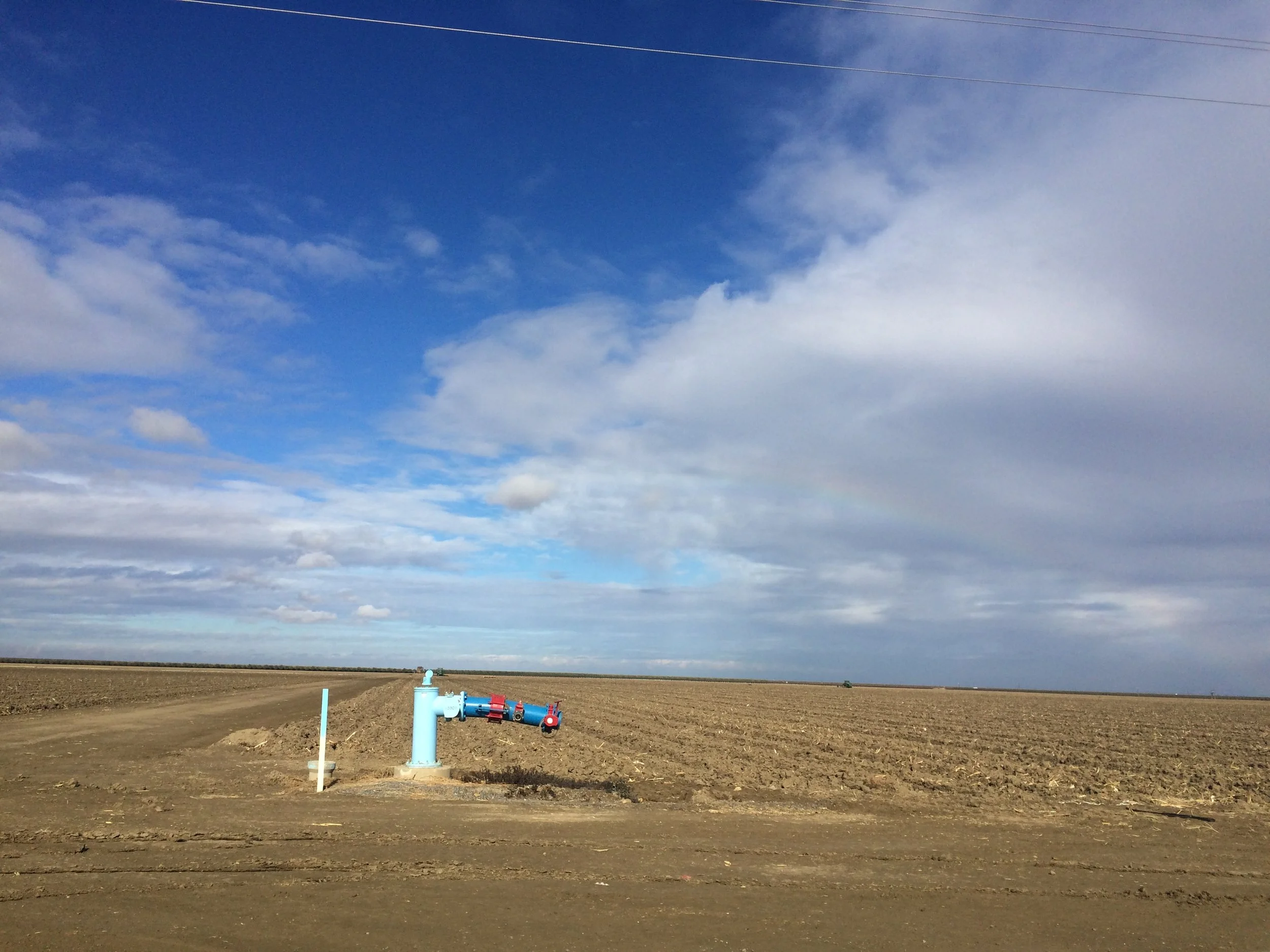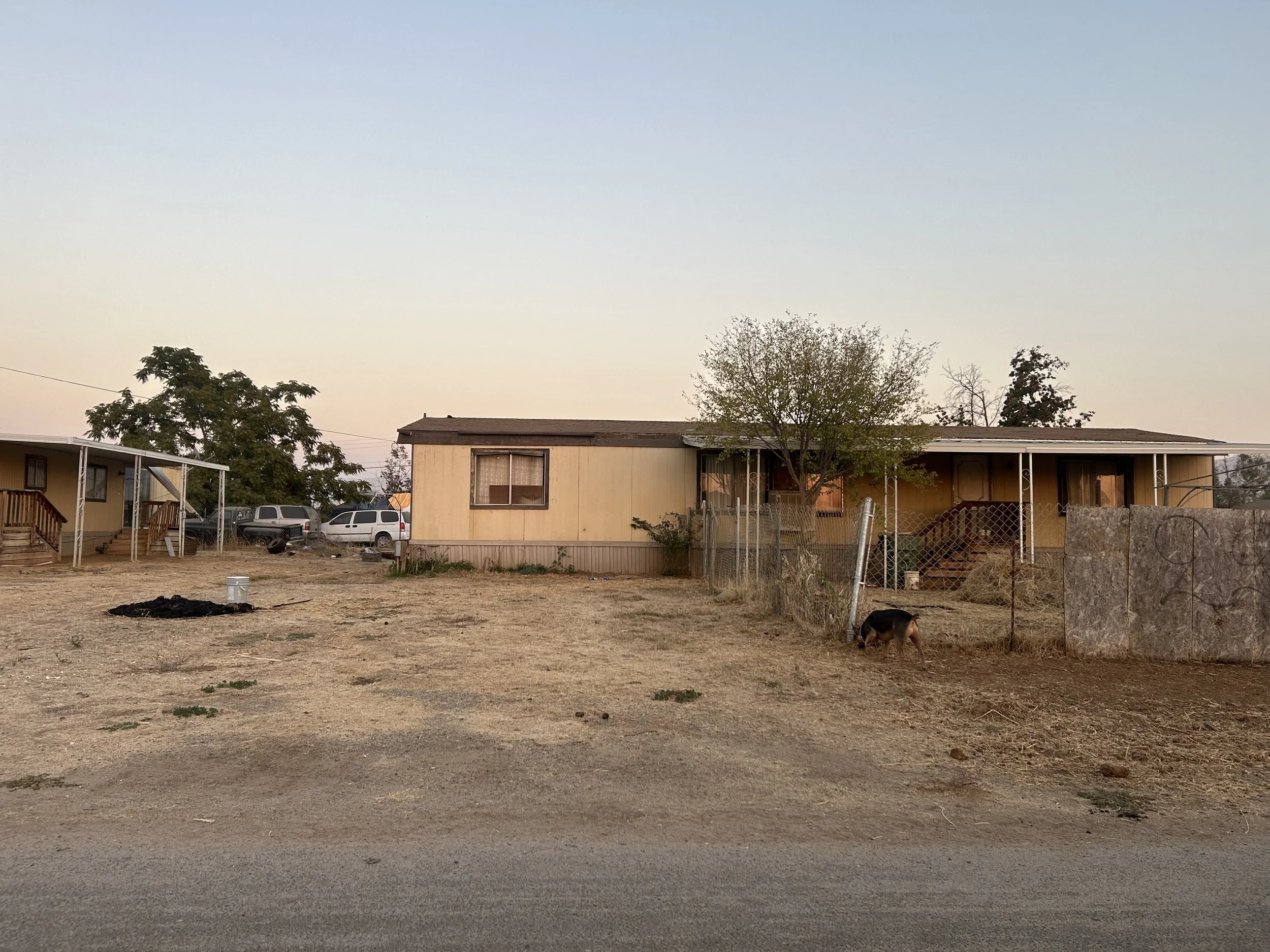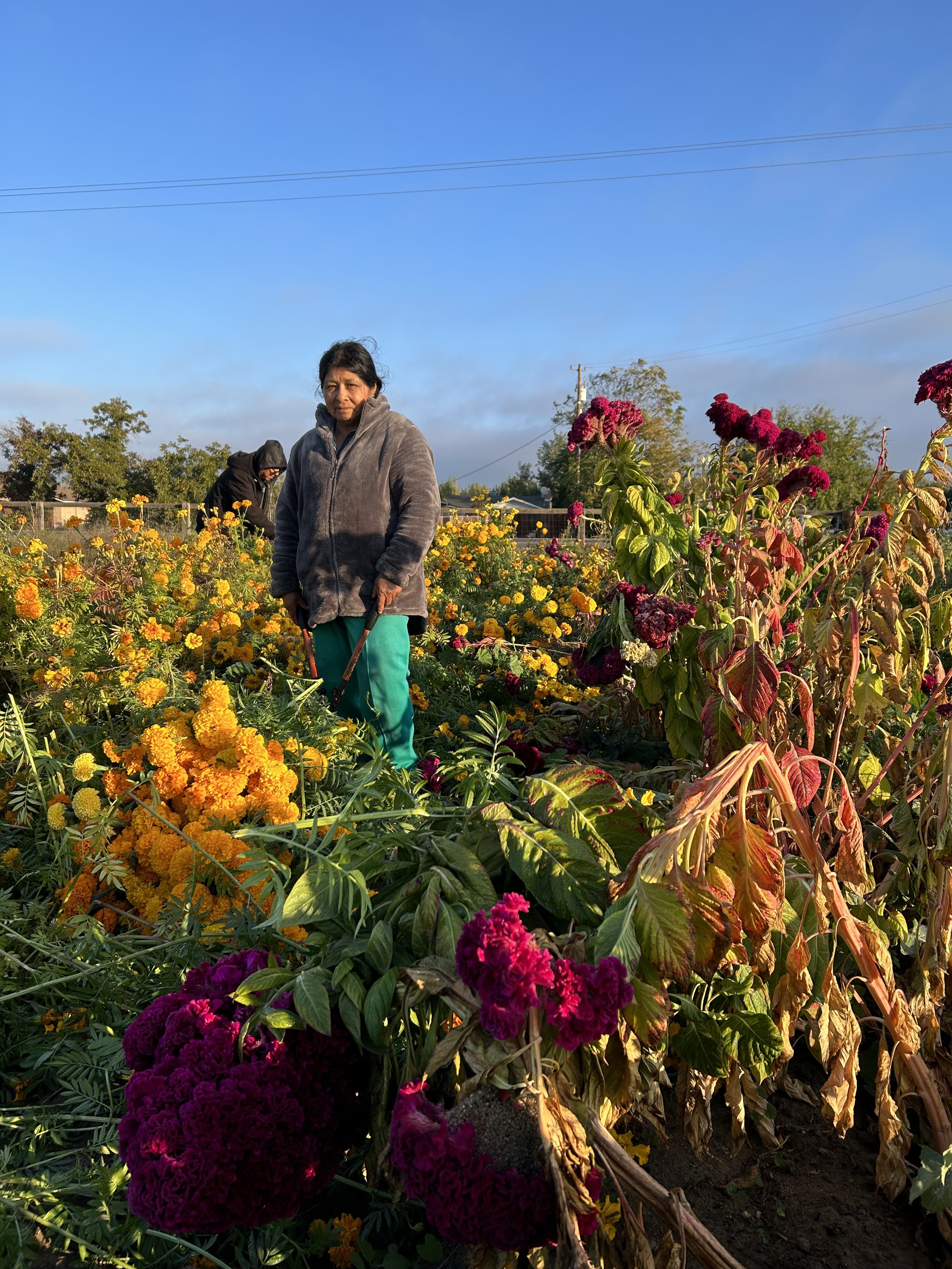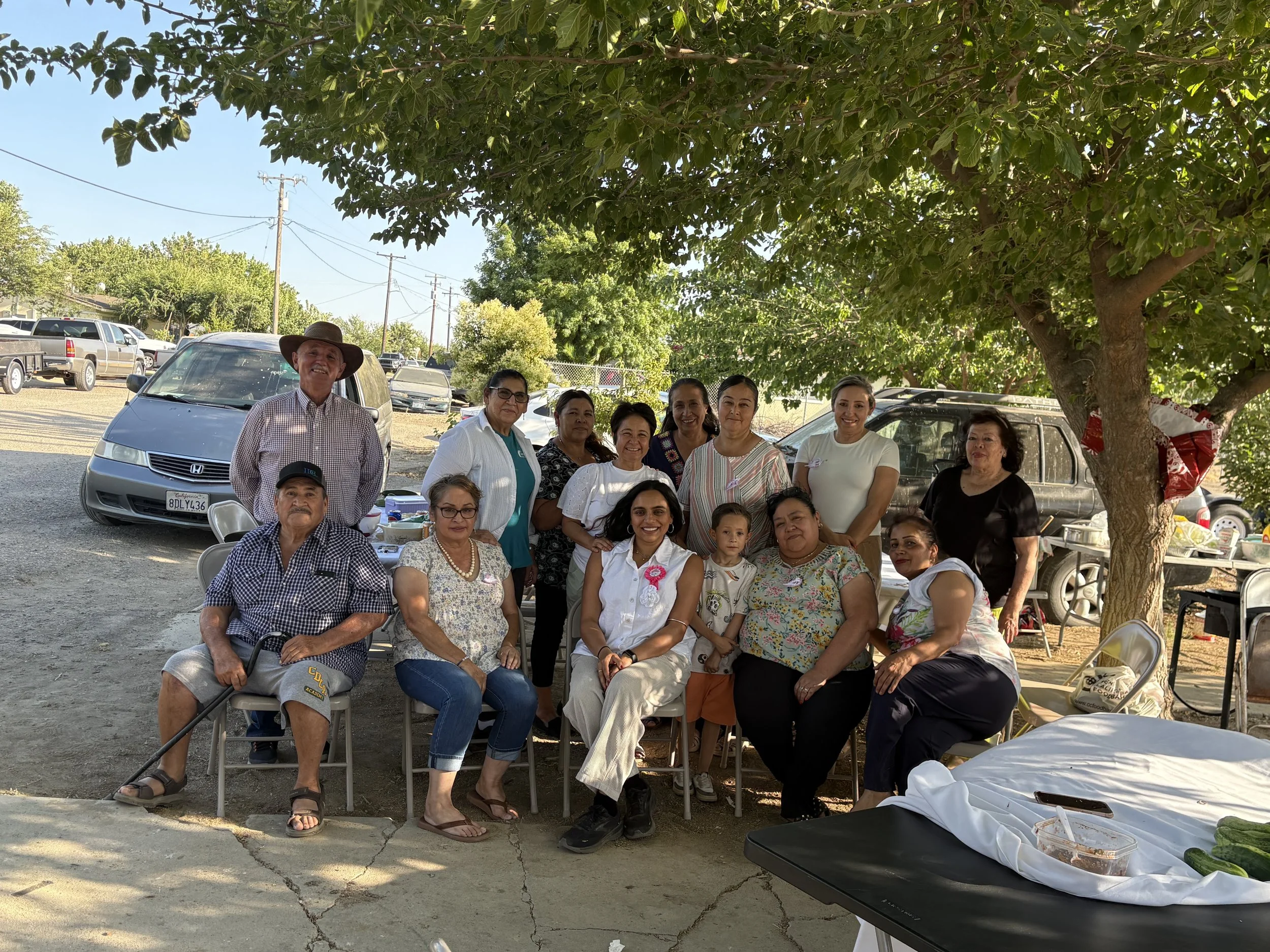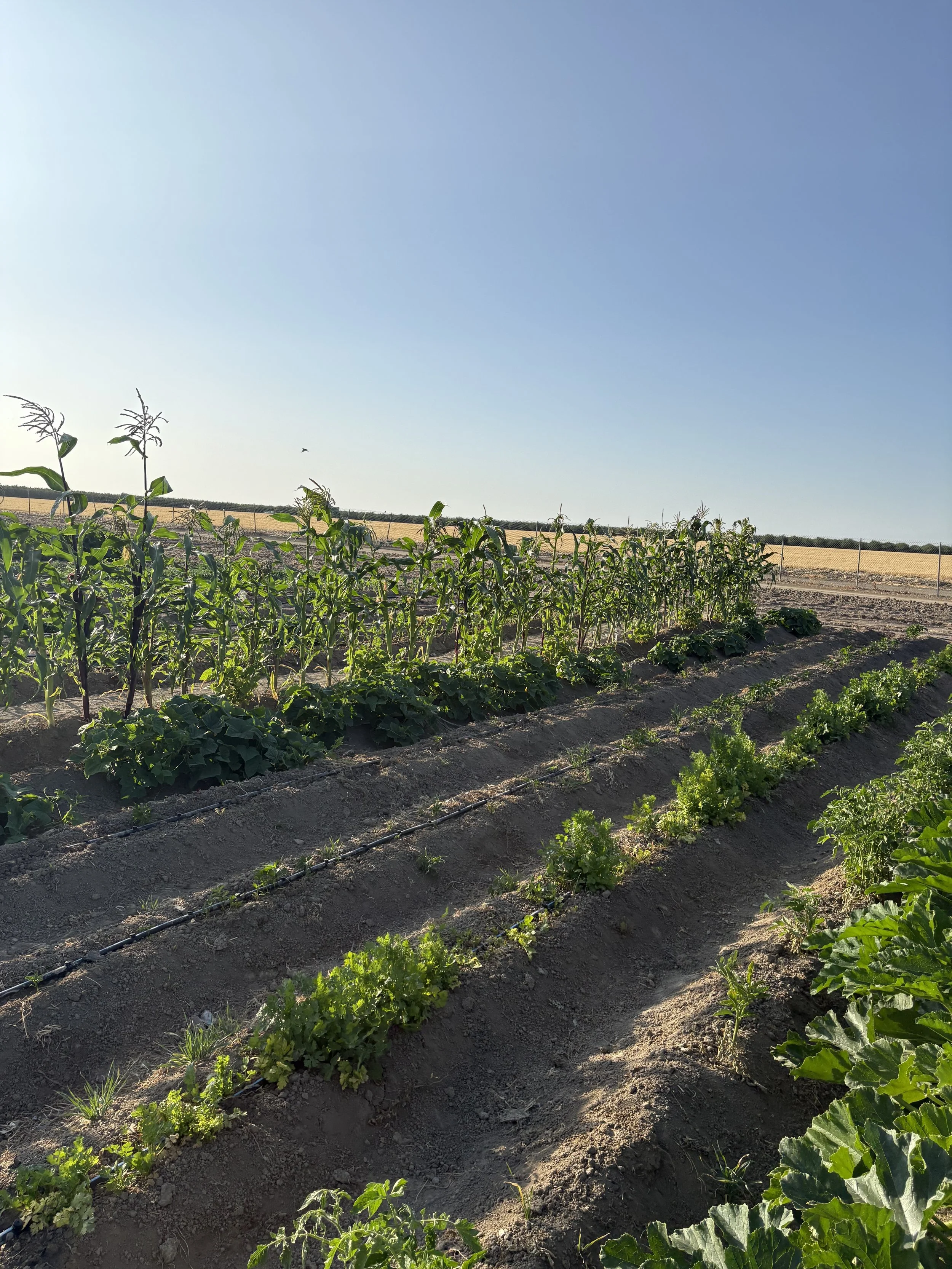A solitary irrigation turn-out in an empty field in western Fresno County
If you take the highway west out of the city of Fresno, concrete administrative buildings give way to suburbs, then to small fields, and eventually to vast tracts of farmland. As the great rind of mid-year light curls around the melon flesh of the Central Valley, endlessness becomes the landscape. In the triple-digit heat of the summer, the waterlessness of the place casts violet on the soil, the earth a crucible of the last aquifer. You’ll pass the occasional well pump, the occasional equipment field, but no signs of domestic human life for miles. And yet, if you turn onto one of the many smaller roads, you’ll find that under unbelievable circumstances, people still live and love the planet here.
I am a botanist and a lawyer, obsessed with the rural sacrificial landscapes, the fringe worlds, that quietly sustain us. For over a decade, I have been observing the plants and people who make home in these places. The same part of me that loves plant adaptation led me into rural California to understand the human community characteristics that bloom under the pressure and freedom of invisibility. Careful attention, curiosity, and the right conditions might allow you to catch a glimpse of the otherwise unseeable and I want you to come along with me.
CalEnviroScreen mapping tool reveals that California’s Central Valley, especially the San Joaquin Valley, faces some of the highest pollution burdens and community vulnerabilities in the state—driven by industrial agriculture, traffic, wildfires, and compounded by poverty, limited resources, and severe health impacts.
The Central Valley is an agricultural phenomenon that covers 20,000 square miles and occupies the largest flat area of the state. Tens of thousands of workers labor there in unforgiving conditions to produce fruit, nuts, vegetables, dairy, and meat for the US and international markets, producing some 8% of the nation’s calories. Thousands more drive through it as they go between the Bay Area and Los Angeles without ever seeing what lies beyond the blur of orchards. Here in California’s backyard, people from all over the world have been moving together to find ways to survive and to make a home in a landscape transformed by anarcho-capitalism and unfettered industry capture. Rural communities are scattered like poker chips across the green, punctuating a landscape carved in a colonial name. Many of these small, often unincorporated places arose from tent settlements during California’s rise to agricultural power during the 20th century, or were lands that were transacted by the Southern Pacific Railroad at the dawn of refrigerated traincar technology. These places are still home to thousands of rural residents and are portals into the power of bodily resistance against the forces of corporate consolidation.
An average rural home in the unincorporated community of East Orosi, Tulare County, CA
Migration is historic, ongoing, and constant. The people who cover the length of the Valley retain vital links to their villages of origin in Latin America, Europe, Asia, Africa, and the Middle East, with diversities extending beyond nationality to language, regional attachment, spiritual orientation, and cultural practice. Scanning the radio while driving down Highway 99, you’ll hear Hmong, Tagalog, Punjabi, Armenian, Triqui, and Mixteco, languages torn by military occupation and thrown into the dust to coexist. Cultural cuisines are densely packed in one glorious stretch of land, each preserved in the cocoon of segregation, but in the 111-degree Fresno summer heat, divisions between worlds melt away. You can find handmade dumplings behind a Tulare County Johnny Quick, paneer tacos at the truck stop in Dinuba, and lacy pupusas served alongside cold papaya salad on the way out of the Fresno city limits, all made by hands marked by the same sun.
Family of Antonio Chavez in the small city of Kerman, CA harvest marigolds and amaranth. Read more about the Chavez family here
Farmworkers, migrants, and Tribal people living in this region have historically experienced the most acute impacts of pesticide exposure and the health risks that come with a life spent working in the fields, and this has been studied and documented since the 1940s, with little by way of effective policy to address it. Sometimes not even appearing on a map, these towns have names like Del Rey, Porterville, and Allensworth. Each is a world within a world. These towns are famous only because The Grapes of Wrath documented a few of them, and a few more were stops on the UFW’s March for Justice in the Spring of 1966, but they represent thousands of lives, waves of migrants over the last 100 years, left bereft by the state and federal water projects and rendered vulnerable to increasingly fatal summers.
Community residents of Cantua Creek, Fresno County, CA eating a community meal near their garden.
I became an attorney with a reflexive belief in environmental justice; that though the survival of those facing the worst of climate change and environmental pollution can be admired, it should not be required. Resilience is being required of people who have been left without access to the most basic of human needs: clean water, air, and places to be safely outside. There’s nothing natural about this. There are limits to what adaptations human beings should be called upon to make, with a big arrow pointing to climate migration, and what a painfully stupid thing it would be if the rest of us were to fail to see our futures reflected there.
Community garden in Cantua Creek, Fresno County, CA in the middle of Westlands Water District. This community lives on bottled water for their daily domestic needs as irrigation water is tainted and groundwater out of reach. The water district has a property-weighted voting structure: to vote or run in elections, one must be a landowner within the district.
I went specifically into these cracks in empire, and I return again and again in search of the teachings of human and non-human adaptation at the rock bottom of land, water, and natural resource capture. I have been jamming a wedge in the door of systems collapse and peering in, and what I’ve learned is that new worlds are being born as we speak. We just have to know where to hold our attention.
I have been working on creating a place to resource the wild dreams of justice and ecology shared by these community imaginations. The Marigold Fund was formed over 10 years of strategic organizing by agroecology practitioners and farmworker community service providers who share the goal of repairing agriculture in the Central Valley, and building power for the landless to become agents in the sweeping climatic and economic changes that are affecting the state. We believe that, like any mycological network, we can be successful in re-growing human, animal, plant, and microbial communities, economies, and ecosystems if we start small and decentralized.
The Marigold Fund for Unincorporated California supports community-led natural resource management strategies, including land access for the growth of community farming operations, community composting and other responsible biomass management, appropriate climate solutions for groundwater longevity, and the creation of local green jobs that strengthen rural economies. Importantly, these projects are proposed by farmworkers, small farmers, and Tribes whose legacies have built California agriculture, localizing benefits and keeping natural and financial resources in place. The Marigold Fund provides funding directly to groups of landless people to build the power of the underrepresented agricultural workers and land stewards living in the literal fringes of democracy, the deeply rural communities that have been excluded from access to capital and political representation that would otherwise support their participation in core natural resources governance.
Are you a cook, eater, policymaker, farmer, land or seed steward, funder or otherwise someone who wonders how to cut a meaningful path in the murk of the current moment? Maybe you want to begin partnering up with rural people and places to start reseeding this impossibly beautiful state together? There in the seeds of the apple of California, the magic of survival is taking place. I invite you to join me.
Download the Marigold Fund Concept Note here
Stay in touch by sending me an email: janaki.anagha@gmail.com and following me on Instagram @marigoldsociety

